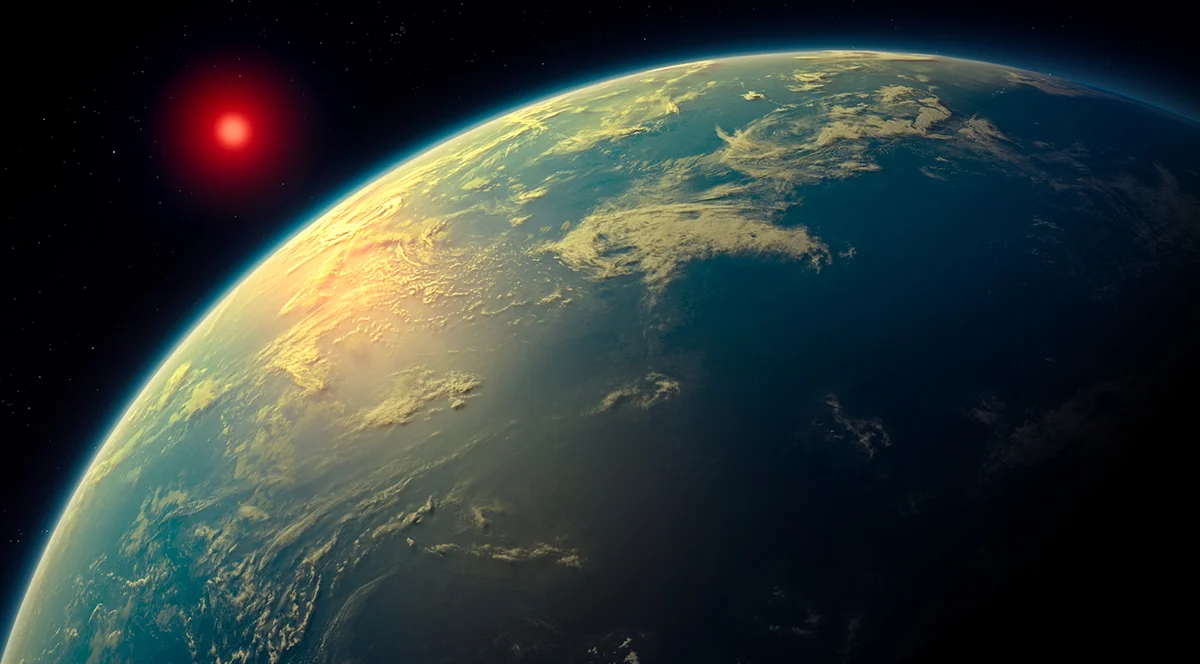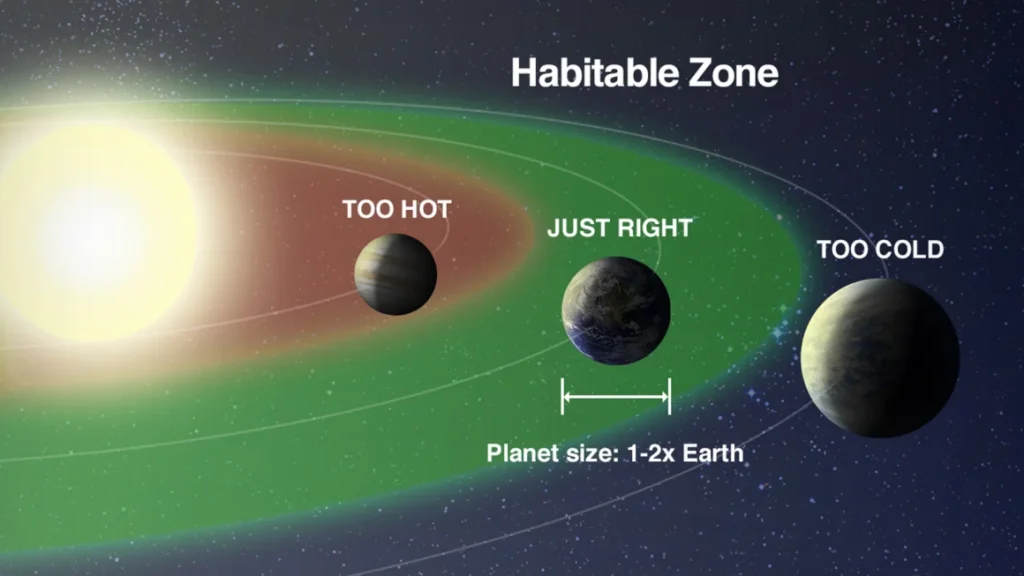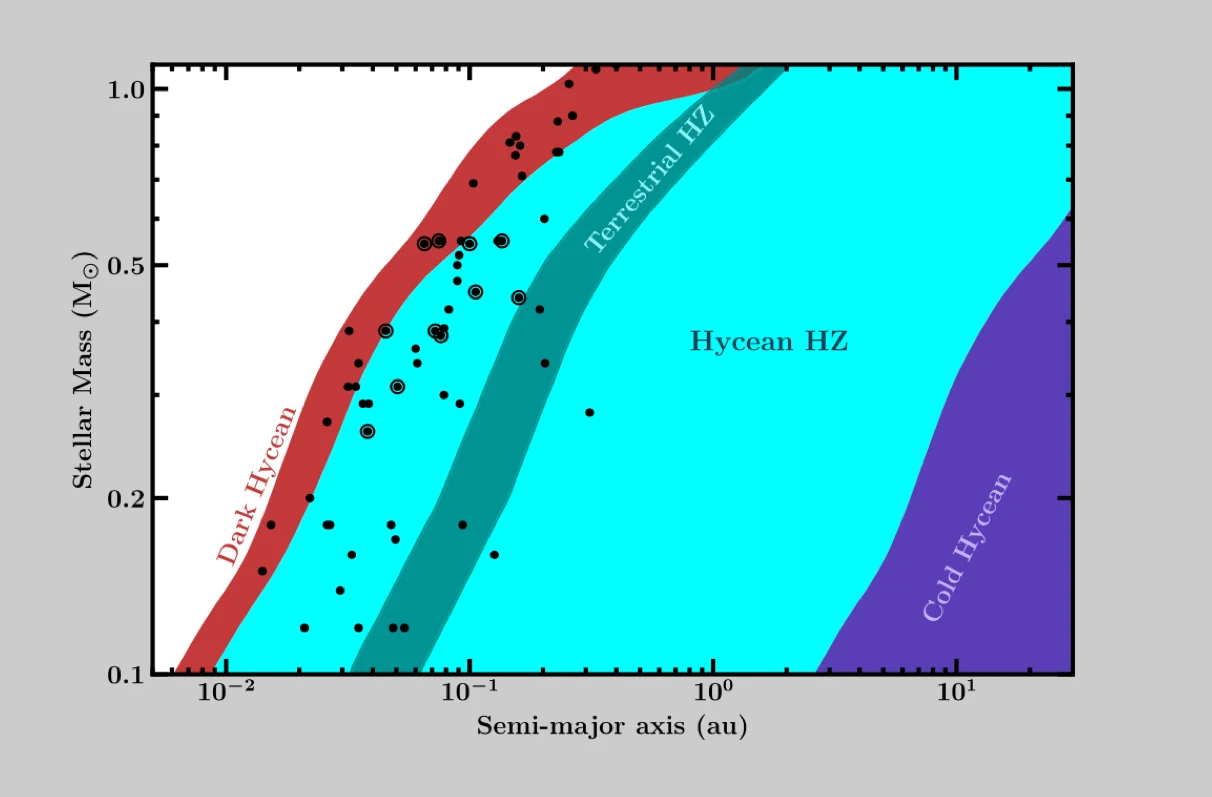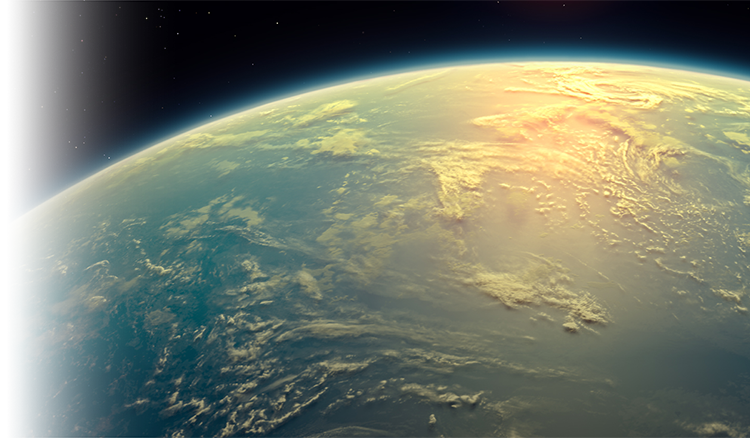Habitability is typically defined as the ability of a planet to sustain conditions conducive for life as encountered on Earth.
It is commonly agreed that the essential requirements for habitability include the presence of liquid water, a source of energy, several bioessential elements, and appropriate thermodynamic conditions. Besides these, several other factors could affect planetary habitability. Detailed reviews of exoplanetary habitability can be found in Cockell et al. (2016), Meadows & Barnes (2018), and Madhusudhan (2025). For example, life on Earth has been known to survive at temperatures between -18 °C and 122 °C, require bioessential elements such as carbon, hydrogen, nitrogen, oxygen, and phosphorus, and exploit energy sources including sunlight and redox reactions (involving organic or inorganic molecules). Hycean worlds are expected to meet all the above requirements for life.

The Habitable Zone
Traditionally, the habitable zone has been considered as the region around a star where an Earth-like planet can sustain liquid water on the surface. The greenhouse effect required to keep the surface warm enough for liquid water on Earth-like planets is caused by molecules such as water vapour, methane and/or carbon dioxide in the atmosphere. If the planet is too close to the star, the oceans can boil away, and if too far, they can freeze. Hycean worlds are defined by their planet-wide oceans, where the temperatures and pressures may be similar to those known to be conducive for life in Earth’s oceans. The habitable zone for hycean worlds is governed by greenhouse warming due to their atmospheres being predominantly made up of hydrogen, an excellent greenhouse gas. Theoretical calculations show that the hycean habitable zone can be significantly wider than the terrestrial habitable zone Madhusudhan et al. (2021), resulting in more exoplanets that are potentially habitable.


The diagram shows the habitable zones for hycean planets. The cyan, dark red, and purple areas represent the habitable zones of typical, dark (nightside), and cold (non-irradiated) hyceans, respectively. The terrestrial habitable zone is shown in teal (Kopparapu et al. 2013). Black circles indicate known sub-Neptune exoplanets, and concentric circles highlight potential hycean candidates. Adapted from Madhusudhan et al. (2021).
Bioessential Elements
Life requires various elements that constitute molecules which act as the building blocks of biological structures and play a key role in various biochemical functions. Our knowledge of life on Earth suggests that these are at least the six “CHNOPS” elements: carbon, hydrogen, nitrogen, oxygen, phosphorus and sulfur. Other less abundant elements, such as molybdenum, nickel, zinc, and iodine are also known to serve essential functions for life as we know it. On Earth, bioessential elements are made available to life, mostly by silicate weathering by water. On hyceans, due to the thick icy mantle, silicate weathering is not expected to be a source of bioessential elements in the ocean. Instead, these would be delivered by other sources, including external impactors such as asteroids and comets, precipitation from the primordial atmosphere, or transport through the ice from the inner rocky core (Madhusudhan et al., 2023a).
Hycean Biology
The possibility of biospheres on hycean worlds is motivating new research on the biological evolution on such planets. Our initial studies using the metabolic theory of ecology shows that higher ocean temperatures expected on current candidate hycean worlds – compared to Earth’s oceans – could be conducive to higher evolutionary rates. Indeed, on relatively warmer planets than Earth, e.g. with 10 degrees higher ocean temperatures, all major unicellular groups would have evolved within just over a billion years from the origin of life, compared to over 3.5 billion years that time on Earth. Conversely, on cooler planets evolution is expected to occur significantly later. More on such work can be found in Mitchell & Madhusudhan (2025).
Receive Email Updates
As we add news and content to the website, we'll email you to keep you updated!


